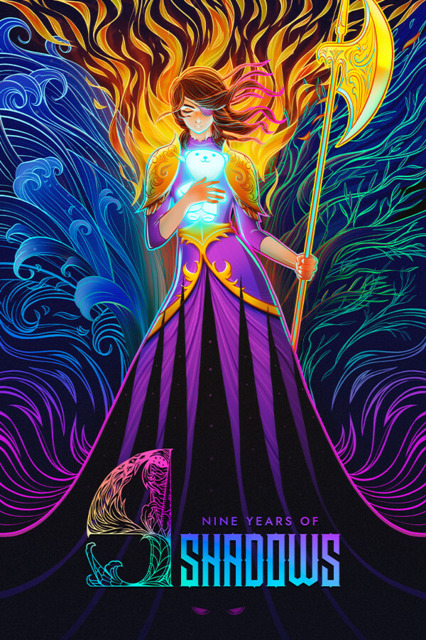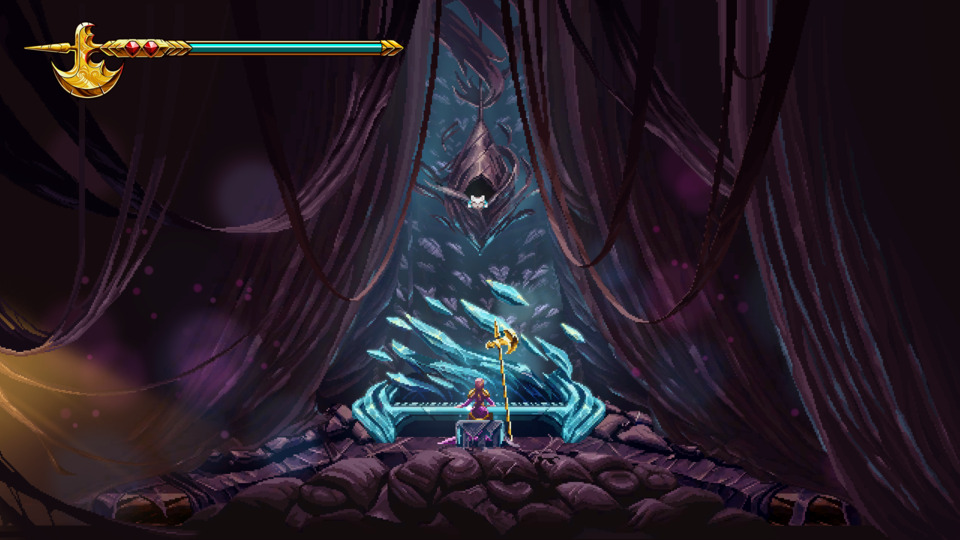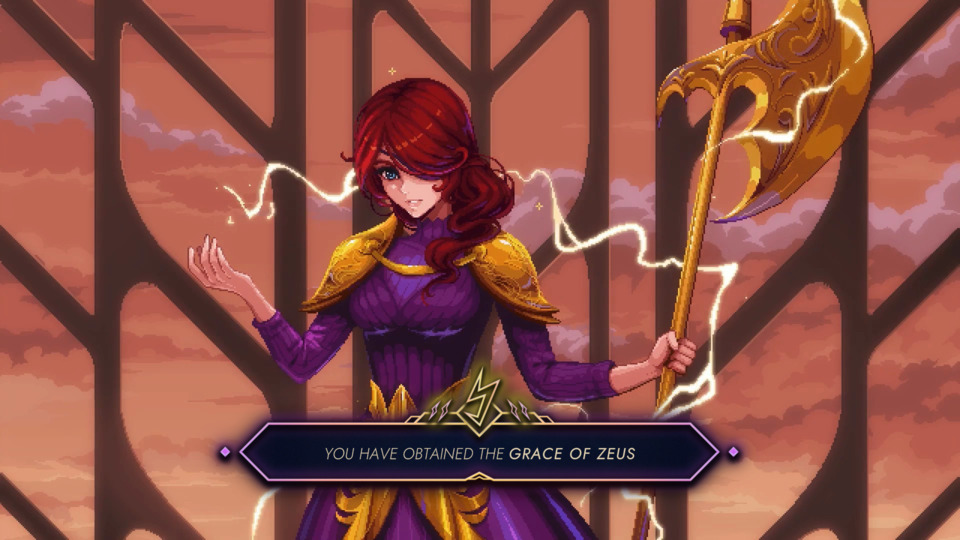Indie Game of the Week 367: 9 Years of Shadows
By Mento 1 Comments

Welcome back to Indie Game of the Week, where we'll be reviewing an Indie explormer. Look, I know. I've been stuck on this one gear for quite some time. It's just... whenever a new explormer comes out and hits the zeitgeist, like it has recently for Tales of Kenzera: Zau and that Prince of Persia thing, I feel my status around here as The Explormer King start to slip all the while the demon known as FOMO rears its ugly head. The only way to purge either of those negative emotions from the ol' map-mulling melon is to dip into my reserve of unplayed explormers and take advantage of this weekly feature to satiate the traversal-upgrade-hungry beast within. But while my myriad neuroses make for fascinating reading, we should really be focusing on 9 Years of Shadows from Halberd Studios instead: a 2D explormer with gorgeous pixel art, a story vaguely related to the Greek gods and muses in a post-apocalyptic world laid under by a powerful curse, and a fluid gameplay style that finds equal challenge in its platforming and combat alike which has very much opted for Symphony of the Night as its inspirational patron.
The protagonist is Europa, a young woman turned halberd-wielding warrior after she was orphaned by the same curse that took the lives of so many. She's tracked its possible source to a tower named after (or is) Talos, the bronze giant who protected Europa's namesake from Greek mythology, and finds the place filled with mindless monsters and traps. Along her travels she encounters a spirit that calls itself Apino and resembles a floating teddy bear: Apino saves Europa after a chance encounter with a demon named Belial and becomes her steadfast companion, with many of the mechanics revolving around their partnership. Europa also keeps meeting the eccentric members of an orchestra who have been separated and terrorized by enemies in the tower: most of the game's sidequests involve defeating specific bonus bosses (who are otherwise optional) to win the musicians' support. I've no idea what all this is earning me, but I suspect it might be one of those "true ending" situations. Europa also pulls a Samus by letting us listen in on her thoughts whenever she enters an elevator transition: she'll muse about the people she's met, the dangers she's faced, and her memories of the outside world for as bleak as they often are.

The primary mechanic that 9 Years of Shadows does a little differently to the great crowd of these games is in how it handles health and its recuperation. Europa has both vitality and a light bar: the former is her health and usually consists of just two pips, after which she immediately dies. The light bar acts more like a shield, absorbing hits for as long as it's active. However, it's also used as the source for Apino's attacks, which provide ranged support and are usually needed to reveal a boss's weak point or activate certain switches. Whenever the light bar empties, Europa is vulnerable; however, by hugging Apino (which is seriously cute, but takes a few seconds) she can recover a major amount of her light bar. Pretty soon you can also acquire an upgrade that lets you complete a small QTE to recover light as soon as the bar empties provided you're quick enough to register it. What this creates is a system where you might be a few hits from death at any point in a fight but can otherwise heal yourself indefinitely if you're able to carve out enough time to do so: a similar system can be found in Hollow Knight and several others. One limitation is that you can't recover the light bar unless it's completely empty, so it's often the case that you'll take a hit and must quickly go on the defensive to avoid any further damage before you can recover. You can, however, shoot off a few of Apino's bullets to empty the bar yourself if you find an opportune lull in a boss fight for a quick recharge. It's an elegant system that only occasionally lets you down in boss fights where attacks are relentless, giving you few opportunities to heal: one of those came fairly early on in a battle against one (later three) sea serpent creatures, where they would sometimes charge across the screen too fast to react to. Most other boss fights have been incredibly easy in comparison, giving you plenty of moments for recovery, leaving the boss difficulty somewhat uneven.
Other mechanics tend to be pretty familiar stuff to explormer veterans. You eventually acquire different elemental armored suits for Europa, each providing a means to pass through certain areas (the red armor for overheated zones, the blue armor for underwater sections, etc.) as well as an associated traversal ability. An example would be the green armor and its power to transform Europa into a tunnelling snake, which works similarly to the morph ball except every time you move you can't stop until you hit a wall, creating a few navigational puzzles in the process. While the platforming is fluid and fun enough the combat tends to be more of an afterthought; Europa has a default three attack combo and a finisher which does considerably more damage, but that's about it and you don't really learn any new moves beyond Apino's firepower (which, given its ammo effectively doubles as your health, isn't something you might want to rely on for damage). You can upgrade each suit of armor but this only increases its attack damage by a miniscule amount and provides no other benefits that I can tell. Since the game lacks an XP/level system and most enemies only drop a small amount of currency, which you can acquire in chests in larger amounts, there's usually no reason to hang around and fight everything you see unless you're trying to fill out the in-game bestiary. Add to this that most enemies are the same crystalline-looking golem things and it's not an aspect of the game that feels like it saw much attention. The bosses, conversely, come in all shapes and sizes and when you add in the many optional battles there's plenty of variety to be had.

On the whole, while there's much to like about 9 Years of Shadows from its competent enough combat and exploration, plus its very attractive pixel art and equally striking hand-drawn animated sequences, it struggles to find much of an identity for itself. This is something many Indie explormers have contended with, which I've been in a position to discover firsthand as I continue to glut myself on a neverending stream of the things, and it's hard to take a game to task for being a perfectly decent if standard iteration on an increasingly well-worn formula. To me, explormers are like pizza: even the less compelling ones are still good eatin' but they're so often obligated to sticking to the same toppings every time (and risk-averse to putting something wild on there in case there's too much flak) that you really can't be eating it every meal, or every other meal, or else you'll quickly grow tired of it. But, man, when a good pizza like 9 Years of Shadows comes along at a time when you're craving some cheesy, meaty goodness, it's hard to be too mad at the fact that you'll probably forget all about it within a few days. Oh great, now I gotta go get a fucking pizza.
Rating: 4 out of 5 pepperoni.
| < Back to 366: Ghostrunner | 001-100 | 101-200 | 201-300 | > Forward to 368: Pseudoregalia |
